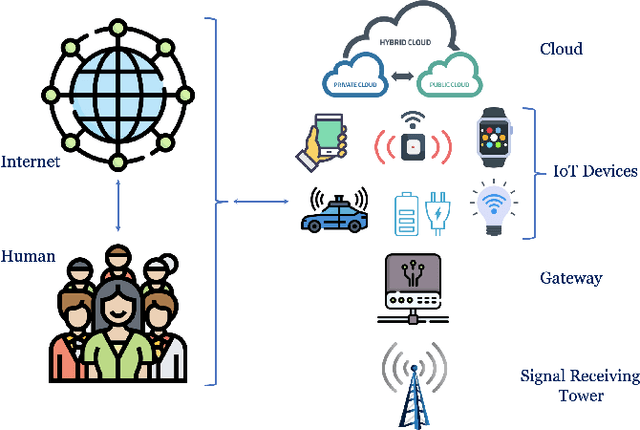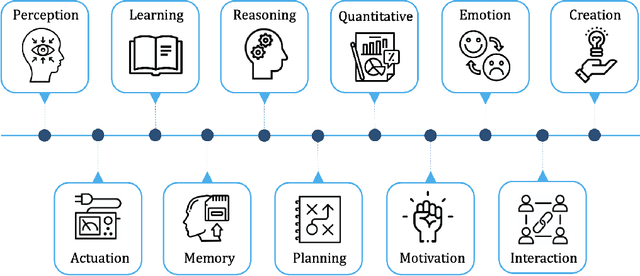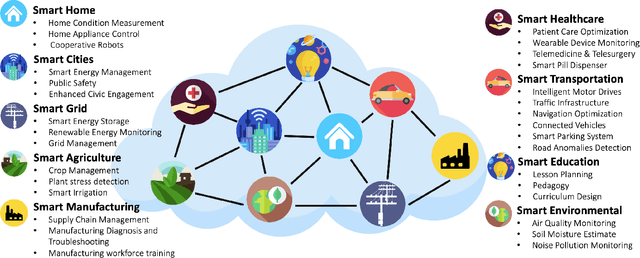Hongyue Sun
A Multi-Agent Framework Integrating Large Language Models and Generative AI for Accelerated Metamaterial Design
Mar 25, 2025Abstract:Metamaterials, renowned for their exceptional mechanical, electromagnetic, and thermal properties, hold transformative potential across diverse applications, yet their design remains constrained by labor-intensive trial-and-error methods and limited data interoperability. Here, we introduce CrossMatAgent--a novel multi-agent framework that synergistically integrates large language models with state-of-the-art generative AI to revolutionize metamaterial design. By orchestrating a hierarchical team of agents--each specializing in tasks such as pattern analysis, architectural synthesis, prompt engineering, and supervisory feedback--our system leverages the multimodal reasoning of GPT-4o alongside the generative precision of DALL-E 3 and a fine-tuned Stable Diffusion XL model. This integrated approach automates data augmentation, enhances design fidelity, and produces simulation- and 3D printing-ready metamaterial patterns. Comprehensive evaluations, including CLIP-based alignment, SHAP interpretability analyses, and mechanical simulations under varied load conditions, demonstrate the framework's ability to generate diverse, reproducible, and application-ready designs. CrossMatAgent thus establishes a scalable, AI-driven paradigm that bridges the gap between conceptual innovation and practical realization, paving the way for accelerated metamaterial development.
Towards Artificial General Intelligence (AGI) in the Internet of Things (IoT): Opportunities and Challenges
Sep 14, 2023


Abstract:Artificial General Intelligence (AGI), possessing the capacity to comprehend, learn, and execute tasks with human cognitive abilities, engenders significant anticipation and intrigue across scientific, commercial, and societal arenas. This fascination extends particularly to the Internet of Things (IoT), a landscape characterized by the interconnection of countless devices, sensors, and systems, collectively gathering and sharing data to enable intelligent decision-making and automation. This research embarks on an exploration of the opportunities and challenges towards achieving AGI in the context of the IoT. Specifically, it starts by outlining the fundamental principles of IoT and the critical role of Artificial Intelligence (AI) in IoT systems. Subsequently, it delves into AGI fundamentals, culminating in the formulation of a conceptual framework for AGI's seamless integration within IoT. The application spectrum for AGI-infused IoT is broad, encompassing domains ranging from smart grids, residential environments, manufacturing, and transportation to environmental monitoring, agriculture, healthcare, and education. However, adapting AGI to resource-constrained IoT settings necessitates dedicated research efforts. Furthermore, the paper addresses constraints imposed by limited computing resources, intricacies associated with large-scale IoT communication, as well as the critical concerns pertaining to security and privacy.
Online Domain Adaptation for Continuous Cross-Subject Liver Viability Evaluation Based on Irregular Thermal Data
Nov 24, 2020



Abstract:Accurate evaluation of liver viability during its procurement is a challenging issue and has traditionally been addressed by taking invasive biopsy on liver. Recently, people have started to investigate on the non-invasive evaluation of liver viability during its procurement using the liver surface thermal images. However, existing works include the background noise in the thermal images and do not consider the cross-subject heterogeneity of livers, thus the viability evaluation accuracy can be affected. In this paper, we propose to use the irregular thermal data of the pure liver region, and the cross-subject liver evaluation information (i.e., the available viability label information in cross-subject livers), for the real-time evaluation of a new liver's viability. To achieve this objective, we extract features of irregular thermal data based on tools from graph signal processing (GSP), and propose an online domain adaptation (DA) and classification framework using the GSP features of cross-subject livers. A multiconvex block coordinate descent based algorithm is designed to jointly learn the domain-invariant features during online DA and learn the classifier. Our proposed framework is applied to the liver procurement data, and classifies the liver viability accurately.
 Add to Chrome
Add to Chrome Add to Firefox
Add to Firefox Add to Edge
Add to Edge